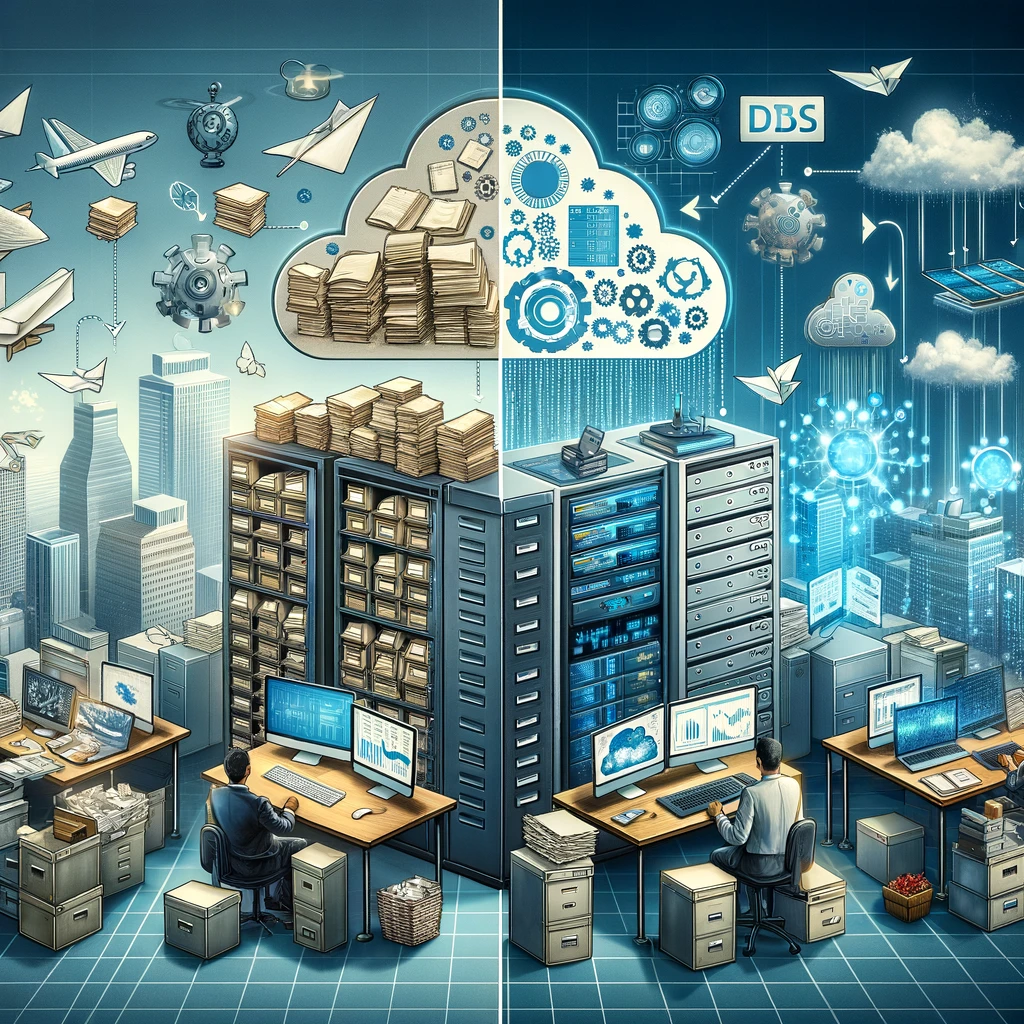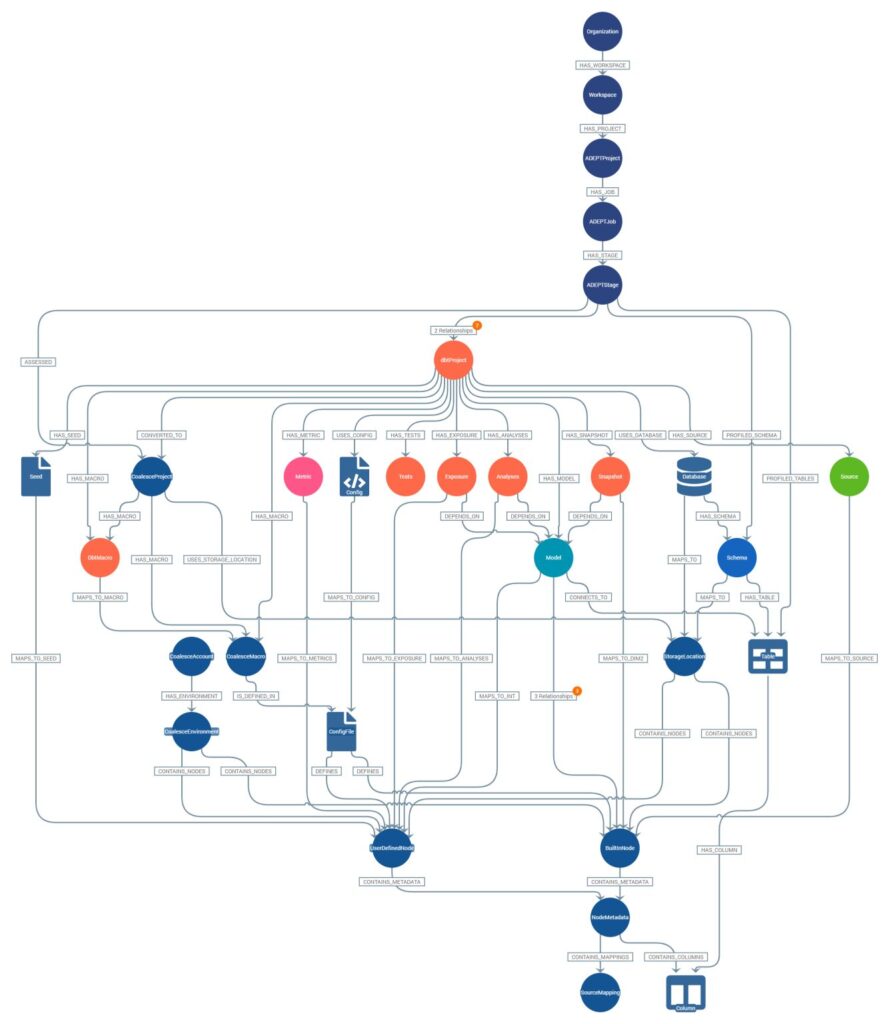Introduction
Embrace a dramatic transformation or risk becoming a digital dinosaur. That’s the message from 2024 for businesses grappling with data modernization. Within the bustling metropolis of Big Data, ignoring the rush of emerging trends is akin to unknowingly walking through quicksand, all while holding a golden ticket – your treasure trove of raw data.
Just to give you a snapshot, experts predict that by 2025, data generation will skyrocket to 175 zettabytes annually – an amount that if stored on DVDs, would cover the entire surface of the Earth…14 times over.
Close your eyes and consider for a moment your evolving role in this burgeoning digital cosmos. Unsettling as it might be, the business landscape is evolving faster than ever and data modernization has emerged as a pivotal guidepost. This means recognizing and harnessing the hottest trends – both the subtle ripples and seismic shifts – in the world of data. This guide promises not just to enlighten, but empower you with keen insights to navigate this intricate maze and leap towards a data-driven future.
Unveiling the Benefits of Data Modernization in 2024
- Discover how data modernization boosts Business Intelligence
- Uncover the impact of data modernization on operational efficiency
- Explore the influence of modern data tools on decision-making.
Enhancing Business Intelligence: How Data Modernization Helps
The intersection of business intelligence and data modernization is an exciting space to be. As data nourishes the now and future, it’s essential we look at how the 2024 landscape of data modernization influences business intelligence.
Data modernization allows for the evaluation and use of data in more sophisticated ways. Emerging technologies such as AI and ML thrive on data, turning it into truly powerful insights. It’s through these insights that businesses can better understand their customers, optimize their operations, and open up new avenues for growth.
Boosting Operational Efficiency: The Role of Data Modernization
Operational efficiency can make or break a business. The smoother your operations flow, the more you can produce, serve your customers, and ultimately, grow your bottom-line.
How does Data modernization fit into this picture? Let’s explore. Data modernization accelerates operational efficiency on two key fronts. First, by breaking down silos and enabling seamless integration amongst various datasets, it ensures that important data is accessible across your organization. Second, modern data tools bring automation into the picture, reducing manual efforts and speeding up processes.
Improved Decision Making: The Impact of Modern Data Tools
In 2024, the stakes for business decision-making are higher than ever. With the sheer volume of data at our fingertips, the ability to sift through it all and reach meaningful conclusions is crucial. Enter modern data tools.
They lend super-human speed and precision to the data analysis process. Instead of spending lengthy hours wrestling with raw data, decision-makers can engage with easily understandable, neatly visualized data nuggets. This turbo-charged ability to interpret data sharpens your decision-making edge, reducing the risk of error while maximizing the opportunity for growth.
Transforming all this knowledge into actionable steps is where the magic truly happens. And the best part? The journey is just beginning.
Top Data Modernization Strategies to Implement in 2024
- Drive transformation with a data-first mindset
- Achieve business wins using advanced analytics
- Foster trust and compliance through data governance
Now that we’ve uncovered the boon that data modernization can bring in 2024, it’s only right that we delve into the specific strategies that can pave your path toward this trend.

Adopting a Data-First Approach: Why It Matters
People have been touting the saying “data is the new oil” for years — and with good reason. A data-first mindset isn’t merely about having a lot of data; it’s about how your organization thinks about and uses data as a primary asset.
But why is this approach so crucial? To put it simply, prioritizing data can lead to a better understanding of your market, customers, and business operations. It can identify gaps, measure performance, and provide the insight needed to make informed decisions.
Depending on the organization and its data maturity, adopting a data-first approach will mean different things. At a high level, it means treating data as a strategic asset that permeates all levels of the business — not just the IT department.
Leveraging Advanced Analytics: The Key to Success
For companies making their way into the digital landscape, powerful insights can be unearthed through advanced analytics. Rather than relying on static, backward-looking reports, advanced analytics harness predictive and prescriptive methods to decode complex data patterns and trends.
Imagine being able to unearth trends, understand patterns, decipher complex relationships between factors, and even predict future trends. That’s the power that advanced analytics can bring to the table. It’s like holding a crystal ball that gives a glimpse into the future, steering your business toward success.
Add in artificial intelligence (AI) and machine learning (ML) to the mix, you have a potent combination to outpace competitors and disrupt markets.
Embracing Data Governance: A Crucial Strategy
If data is the new oil, data governance is the refinery that processes this raw resource into a form that’s usable, safe, and valuable. It ensures your company’s data is accurate, reliable, complete, and available to users, all while complying with regulations and maintaining security.
Data governance encompasses a range of activities, including data quality, data privacy, data architecture, and data lifecycle management. It can minimize risks associated with data handling, improve the efficiency and productivity of business operations, enhance customer trust and loyalty, and ultimately, it can provide a competitive advantage.
In the age of GDPR and growing concerns about data privacy, robust data governance is no longer an option but an integral part of any modern data strategy. We’ve covered Data Governance extensively in this article.
Overcoming Data Modernization Challenges in 2024
- Tackle the obstacle of modulizing outdated legacy systems
- Safeguard your data while ensuring full transparency
- Consistently manage data quality, ensuring your data remains rich and accurate
Dealing with Legacy Systems: A Major Hurdle
Legacy systems are complex data ecosystems with complex structures and outdated processes that seem to have been carved in stone ages ago. These ancient architectures can be a massive handicap to data modernization efforts in 2024.
The good news is that there are paths forward. Businesses can transform their legacy systems into more manageable formats with the right approach. Leveraging micro-services and containerization can minimize risks of business disruption while ensuring a smoother transition.
In the world of data modernization, ‘change’ is the only constant, and most companies will have to overhaul their existing systems to maximize efficiency and ensure a competitive edge. Any delay would only augment the complexity of migration, making it a more daunting task in the future.
Ensuring Data Security: A Persistent Challenge
In 2024, with the expansion of data-driven strategies, data security assumes a vital role in any business’s daily operations. The process of migrating data from legacy systems to modernized platforms increases the risk of security breaches and data leakage.
But it’s not all doom and gloom. Enterprises can place robust security measures such as encryption, data masking, and tokenization. Incorporating these strategies ensures that sensitive data is neither accessible nor comprehensible to unauthorized insiders or malicious intruders thus, ensuring data security.
Remember, data security is not a one-off but a continuous process. Staying abreast of security norms and adopting best practices will make the data modernization process secure and risk-free.
Managing Data Quality: An Ongoing Task
Data quality will always be a crucial entity in data modernization. Maintaining high-quality data means ensuring that it’s accurate, consistent, and can be trusted to inform business decisions.
Deploying the right data quality management tools and setting up automated validation checks can significantly ease the burden of data scrubbing. Additionally, establishing a robust data governance structure ensures there is a set framework for maintaining and improving data quality over the long term.
Conclusively, though managing data quality might seem like an arduous task, businesses can streamline the process by making targeted investments in tools and procedures designed to streamline this task.
The Role of AI in Data Modernization: A 2024 Perspective
- AI-driven data analysis reshapes the way businesses interact with data.
- Predictive analytics becomes key to successful data modernization.
- AI and data governance synergize to unlock new value.
AI-Driven Data Analysis: A Game Changer
AI is not just about robots and self-driving cars. It has the potential to transform how businesses interact with and leverage their data. Businesses leveraging AI technologies can transform massive data sets into actionable insights, driving smart data-driven decisions.
AI’s power lies in its ability to learn, adapt, and evolve. Patterns buried deep within data become insightful nuggets of information. Supervised learning techniques help train AI algorithms to identify patterns and make predictions. Unsupervised learning unlocks more complex data patterns. Both are driving business intelligence to a whole new level.
AI is sparking a new wave of data-rich business environments. It’s creating countless opportunities to drive efficiency and monetize data.
Predictive Analytics: The Future of Data Modernization
Predictive analytics isn’t a new concept. But its relevance in modern data ecosystems is skyrocketing. Powered by AI, predictive analytics leverages historical data and statistical algorithms to predict future outcomes.
Predictive analytics can help organizations forecast customer behavior, detect fraud, optimize operations, and assess risks. It goes beyond just explaining what has happened, or what’s happening now. It tells you what might occur in the future.
Think of predictive analytics as the secret sauce in data modernization. It helps businesses stay one step ahead, preparing for the future instead of just reacting to the present.
AI and Data Governance: A Powerful Combination
Data governance is the management of data’s availability, usability, integrity, and security in a system. Coupling this with AI, organizations are unlocking new value from their data assets.
AI can help in identifying discrepancies in data quality, ensuring data meets governance standards. It can also provide essential context for data, facilitating efficient data management.
AI’s role in data governance is more than just maintaining data quality. It’s about helping businesses leverage their data responsibly while driving real business value. In a digitally competitive environment, this powerful combination will set market leaders apart.
While embracing AI and data governance may appear daunting, the rewards far outweigh the risks. Organizations who aren’t exploring this potential are likely to be left behind in 2024’s competitive digital ecosphere.
Data Modernization and Cloud Computing: The 2024 Connection
- Companies are moving towards cloud-based data platforms for modernizing data.
- The cloud offers scalability, flexibility, and a direct boost to data modernization efforts.
- An understanding of how cloud security strengthens data modernization is essential.
Emerging from the AI-powered scene, we weave through to another integral aspect of data modernization: cloud computing.
Cloud-Based Data Platforms: The New Normal
Cloud computing has been making waves, influencing how businesses handle their data. No, it’s not because everyone else is doing it. It’s a strategic move, with cloud-based platforms offering cost-saving benefits, enhanced data accessibility, and speedier analytical capabilities. Utilizing the cloud as a data platform is emerging as standard practice, providing an efficient path to navigating the complexities of data modernization.
Benefits of Cloud-Based Platforms
Viewing the cloud as an alternative to traditional, on-premises data systems is just the tip of the iceberg. Cloud adoption allows organizations to break free from the significant costs associated with managing their infrastructure. This leads to resource optimization, allowing attention to shift towards critical tasks, like data analysis and insights generation.
The cloud also takes the trophy when it comes to data accessibility. With data residing on the cloud, access is no longer location-dependent. Your data becomes as mobile as you, fostering a seamlessness in operations irrespective of geographical boundaries. This mobility ties into speed as well: with accelerated data retrieval and processing, businesses can derive actionable insights faster than ever before – the epitome of data modernization.
Scalability and Flexibility: The Cloud Advantage
When it comes to data modernization, the cloud’s scalability and flexibility stand as unfaltering allies for businesses. Sudden data influx? No worries, the cloud got it. Need to scale down? The cloud is flexible enough to handle that too.
Scalability Catalyzing Data Modernization
The cloud’s scalability is its superstar feature. It allows businesses to grow or reduce their data storage and computing capacities as needed. In an era where data generation is skyrocketing, having a platform that can keep up is priceless. It bolsters data modernization efforts by providing the bandwidth to handle increasing volumes and complexities of data.
Flexibility stands shoulder-to-shoulder with scalability. The cloud’s nature of operation is designed with adaptability in mind. It offers the freedom to experiment, especially beneficial in times of strategic changes. The flexibility to tweak and adjust systems with minimal disruptions to ongoing operations provides a solid foundation for sustained data modernization.
Cloud Security and Data Modernization: A Crucial Link
Security and modernization are intertwined in a love-hate relationship. As efforts to modernize data increase, so do security risks and threats. Tackling security within a cloud environment might seem like a Hercules task. However, cloud platforms reportedly provide more robust security than traditional hosting environments.
Understanding Cloud Security
Cloud providers are continually staying ahead, fortifying their fortresses against data breaches, hacks, and unauthorized access. Modern cloud security involves more than just encryption and firewalls. It extends to advanced features such as secure private network connections, multi-factor authentication, and frequent, automated backups. These aspects work together, providing better resistance against threats and ensuring data safety, inevitably supporting data modernization.
With the cloud spinning its magic, data modernization is accelerating at an unprecedented pace. Cloud computing’s influence resonates strongly, making it one to keep an eye on in 2024’s data modernization landscape.

Understanding the Basics of Data Modernization
- Data modernization uncovered
- The value of updating your data systems
- The evolution and growth of data modernization tactics
What is Data Modernization?
Data modernization is essentially a process of rethinking and revamping your old data management systems. Consider it the nutritional injection that your outdated databases crave for. It involves upgrading data formats, databases, software, and hardware in an orderly, strategic fashion. This logistical dance is mediated through modern techniques and technologies designed to improve system performance, operational efficiency, and business outcomes.
In a world where business velocity heavily depends on the speed and ease of data accessibility and interpretation, data modernization aligns your outdated infrastructure with the digital era. Picture transforming a classic storage room laden with dusty files into a digital repository where you quickly locate the required document – that’s data modernization.
Innovations like the Internet of Things (IoT), machine learning, and predictive analysis further compel companies to modernize their data architecture. After all, you can’t run an ultra-modern smart vehicle with a 20-year old engine!
Why is Data Modernization Important?
In the 21st-century economy, the statement, “Data is the new oil,” has resonated across industries. Companies are hustling to leverage the massive volumes of data they generate daily. They automate processes, personalize marketing strategies, and design predictive models to stay ahead in the competition.
The traditional databases have grown incapable of handling this data surge and the processing speed that businesses demand. Here, data modernization is the IT equivalent to ‘survival of the fittest.’ It enhances your data delivery speed, making it easily accessible and interpretable.
It also improves the data security level to meet the stringent data protection laws of this digital age. It isn’t unheard of a company facing legal repercussions or tumbling reputation due to data breaches. Conversely, a modernized data infrastructure is a safeguard against such predicaments.
Thus, data modernization isn’t merely a fancy IT project but a business strategy imperative for sustainable growth.
The Evolution of Data Modernization
Much like the evolution of mankind, data modernization has undergone several stages. From simple databases and manual computations, we’ve crossed milestones with relational databases and business intelligence tools. Today, we’re in the midst of a wave of artificial intelligence, machine learning, and predictive analytics.
This journey witnesses an increasing complexity and volume of data, demanding more sophisticated handling. It started with enhancing data storage and accessibility and has advanced to data analysis and prediction modeling. This evolution will by no means, cease. As businesses grow, so will their data, reinforcing the need for ongoing data modernization.
In essence, data modernization charts the progress in business processes and strategies. It’s a tale of overcoming limitations, embracing new technologies, and setting up platforms for future expansions
Case Studies: Successful Data Modernization Initiatives
- Overview of real-world data modernization examples
- Insights into a tech giant’s transformation, a small business success, and a governmental paradigm shift.
- Learn the successful strategies and outcomes of data modernization initiatives.
Case Study 1: A Manufacturing Journey
From managing huge data volumes, integrating intricate systems, to elevating the decision-making process, this manufacturing giant’s journey into data modernization is nothing short of inspiring.
The rapid advancement and growing role of technology have put them smack at the crossroads of new opportunities and stiff competition. They met this challenge by implementing strategic data modernization initiatives.
We started with a comprehensive audit of their existing data systems using our internal toolkit, ADEPT. We then identified inefficiencies, bottlenecks, and areas for improvement, leading to a pertinent action plan. We went ahead to implement advanced technologies like data migration tools, data integration software, and cloud technologies. Their data modernization journey revolved around improving data quality, enhancing data accessibility, and ensuring data security.
Their successful data modernization has resulted in improved decision-making processes, streamlined operations, and increased productivity. They were able to turn data into valuable insights, reduce data redundancies, and ensure information is readily available when and where it’s needed. This case study proves that a large-scale manufacturing firm can successfully modernize its data architecture for optimal results. Read more on that here.
Case Study 2: A Small Business Success Story
Data modernization is not limited to large corporations. A small scale business also transformed its data architecture and reaped benefits it arguably could not have achieved otherwise.
The business aimed to digitize its manual processes to improve efficiency and adapt to the fast-changing business landscape. Its modernization journey began by mapping its existing data architecture, identifying outdated legacy systems, and exploring modern data tools and technologies.
The small business integrated its modern data system with advanced analytical tools. This enabled it to acquire real-time business insights, make data-driven decisions, and develop personalized marketing strategies.
This business has achieved significant milestones, including improved customer services, increased sales, and enhanced operational efficiency. Experiencing the undeniable benefits firsthand, despite its limited resources, has successfully adopted data modernization in its operations.
Case Study 3: A Government Agency’s Transformation
Government organizations are historically burdened with legacy systems and bureaucratic processes that can delay decision-making and service delivery. Data modernization can change this narrative, and one government agency is a testament to this.
The agency’s journey started with the recognition of the limitations of their traditional systems and the need for a change. With a clear roadmap in place, the agency leveraged advanced technologies like cloud storage, big data analytics, and cybersecurity tools.
Through modernization, the agency has transformed its traditional, static databases into dynamic, accessible, and secure systems. It has facilitated faster decision-making, enhanced citizen services, and improved transparency. This case study illustrates the transformative power of data modernization in the public sector.
Data modernization isn’t only beneficial for businesses but is a crucial step towards revolutionizing governmental institutions. It represents a significant shift in how organizations, regardless of their industry or size, handle their data.
Heading into the Future: Harnessing Data Modernization
Data modernization and the trends associated with it are reshaping the B2B landscape slowly but surely. AI-driven data management, the rise of data fabrics, and the continuous evolution of cloud storage are just the tips of this transformative iceberg.
The implications are game-changing. Modernizing your data practices ramps up efficiency, fosters more informed decision making, and ultimately, bolsters your bottom-line.
Your next move is sharing these trends with your team before aligning your current work processes with future data modernization strategies. Begin by conducting a quick audit of your data practices and identify areas for modernization.
Having seen these trends, how ready is your business to adapt? Which of these trends catches your attention the most, and why?
Boldly embrace these shifts and harness the opportunities they bring. After all, data is the new oil; refining it is the only way forward.




